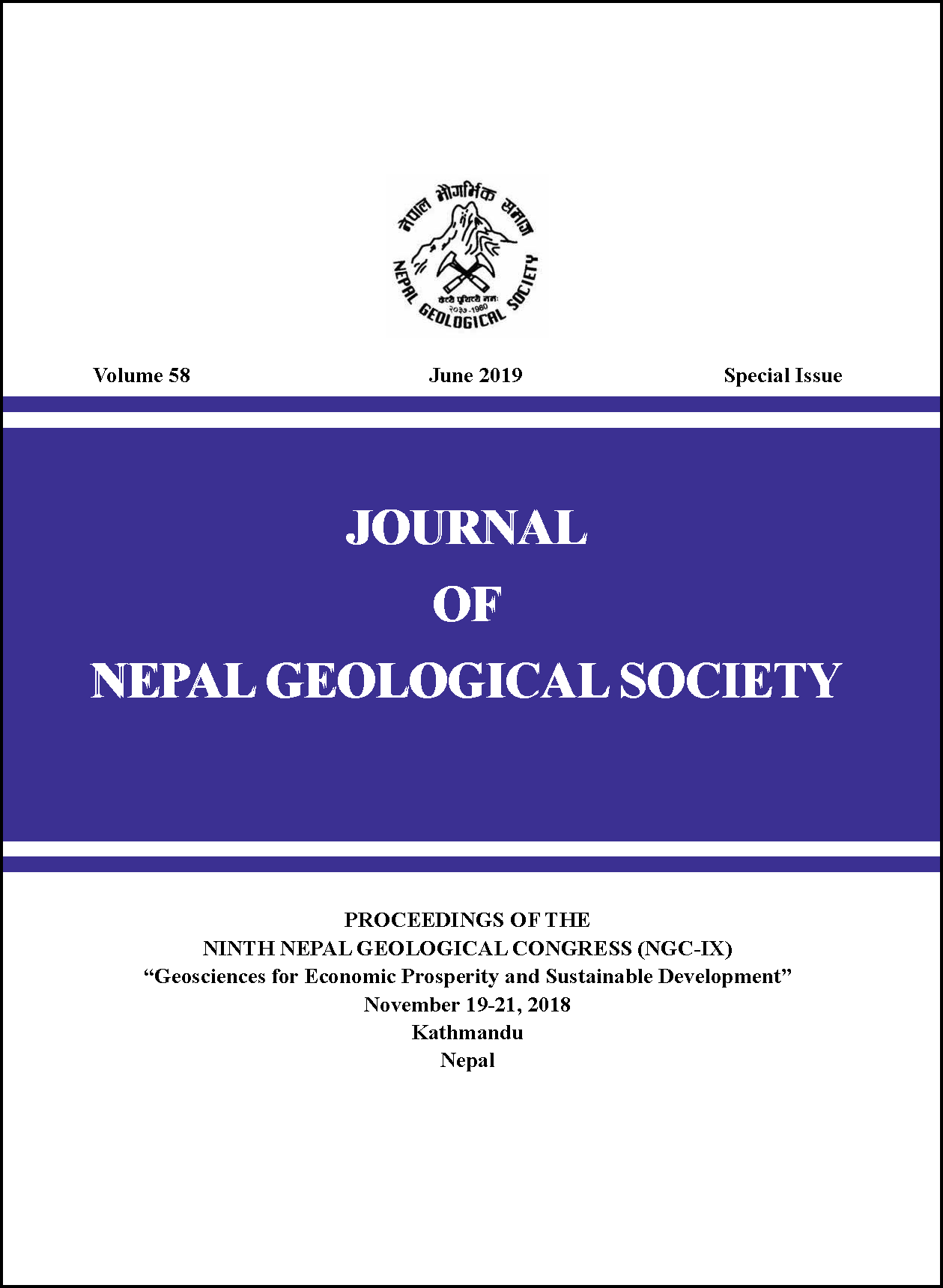Characteristics and field relation of Ulleri Augen Gneiss to country rocks in the Lesser Himalaya: A case study from Syaprubesi-Chhyamthali area, central Nepal
DOI:
https://doi.org/10.3126/jngs.v58i0.24577Keywords:
Ulleri Augen Gneiss, Field relation, Metamorphism, Central Nepal, Lesser HimalayaAbstract
The distribution of Ulleri Augen Gneiss and its origin in the Lesser Nepal Himalaya adjacent to the Main Central Thrust zone is stilla debate among the geo-scientists. Geological mapping was carried out along the Syaprubesi-Chhyamthali area of central Nepal with the aim to study the field relation, distribution, deformation and metamorphism of the Ulleri Augen Gneiss. During mapping, close traverses were set to observe the field relation and a number of systematic samples were collected for analysis of composition and texture. Some preliminary findings were obtained related to its geological position and distribution. This gneiss is hosted within the Kuncha Formation, the oldest unit of the Nawakot Group in the Lesser Himalaya. It has been evolved within this unit as a tabular form in some places and lenses in other places. It shows both concordant (i.e., sill type) and discordant (i.e., dike type) relationship with the host rock. It is characterized by augen-shaped porphyroblasts of K-feldspar and S-C mylonitic texture showing top to the SW sense of shear. The S-C structures and lineated textures shown by the minerals are associated with the shearing caused by the movement along the MCT during the syn-MCT metamorphic deformation. It is characterized in different types of lithologies such as augen gneiss, banded gneiss and two-mica gneiss. An attempt is made to explain the petrological characteristics and field relation of the Ulleri Augen Gneiss with the host rocks along with structural aspects. Based on the field relation and texture analysis, the evolution of the protolith of this Ulleri Augun Gneiss can be interpreted as a multi-story emplacement within the host rocks during and immediately after the sedimentation.
Downloads
Downloads
Published
How to Cite
Issue
Section
License
© Nepal Geological Society




